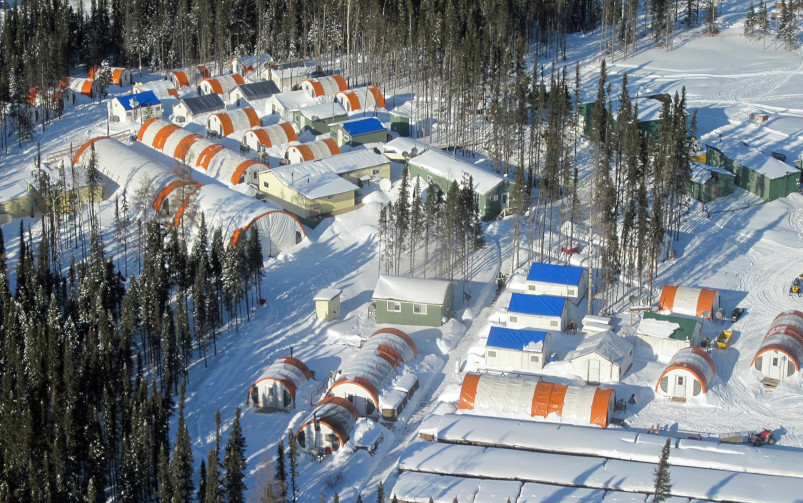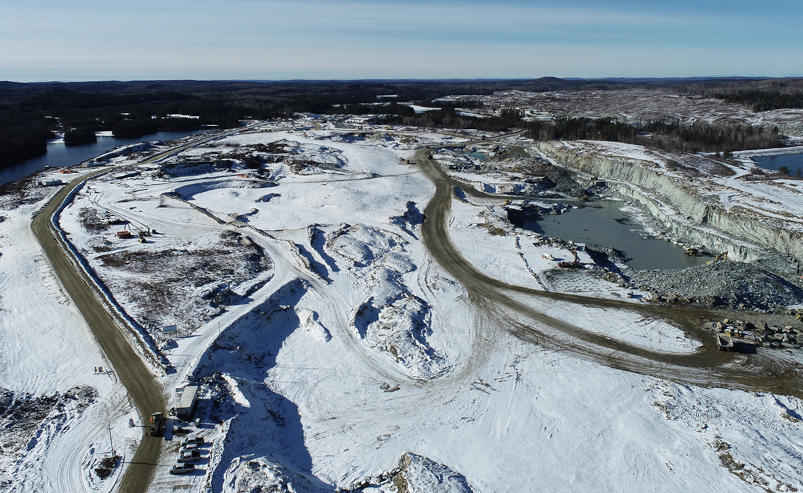Under the new life of mine plan, Detour Lake will operate for 22 years until 2042. Courtesy of Kirkland Lake Gold.
On Mar. 31, over a year after its $4.9 billion purchase of Detour Gold, Kirkland Lake Gold announced a new life-of-mine plan for its Detour Lake gold mine, promising higher annual production and lower costs.
Kirkland Lake announced its purchase of Detour Gold back in November 2019, with Kirkland Lake president and CEO Tony Makuch citing Detour Lake’s “excellent fit” for the company alongside its other two assets – the Macassa and Fosterville mines – located in northern Ontario. A large part of that fit was the operation’s exploration potential, which, according to Makuch, has so far been successful.
“A key factor driving our interest in acquiring Detour Lake was the belief that we could substantially grow [its] mineral reserves through extensive drilling,” Makuch said in the recent announcement. “With continued drilling success, we anticipate transitioning to a much larger pit design as we grow our mineral reserve base leading to further increases in production at better unit costs.”
A 2018 technical report from Detour Gold gave the mine an after-tax net present value of $3.448 billion, with a five per cent discount rate, and a mine life of 22 years, running from 2018 to 2040. Proven and probable mineral reserves came in at 16.044 million ounces from 516.9 million tonnes grading at 0.97 grams per tonne and an average annual production of 659,000 ounces. Additionally, life-of-mine capital expenditure and operating expenditure were listed at $2.519 billion and $11.78 billion respectively, with average all-in sustaining costs of $1,171 per ounce sold.
Related: Evolution Mining adds Bateman gold project to its growing portfolio at Red Lake
The 2021 life-of-mine plan maintains its 22-year span, though continuing into 2042 rather than 2040, and comes with an after-tax net present value of $3.792 billion, with a five per cent discount rate. The mine’s updated proven and probable reserves now total 13.821 million ounces from 447.4 million tonnes grading at 0.96 grams per tonne. Annual production, however, is expected to increase significantly, ranging between 680,000 and 720,000 ounces over the next five years before reaching 800,000 ounces per year in 2025. Costs are expected to be lowered as well, with capital expenditure and operating expenditure coming in at $3.621 billion and $8.69 billion respectively. All-in sustaining costs will average around $821 per ounce sold.
For Makuch, the possibilities for Detour Lake are massive.
“The 2021 [life-of-mine plan] represents an important interim report on our progress advancing the Detour Lake mine…,” he said. “Based on the new mine plan, Detour Lake is poised to become Canada’s largest gold producer and, with the potential for substantial growth in mineral reserves as our drilling programs continue, could very well become one of the largest and most profitable gold mines in the world.”




